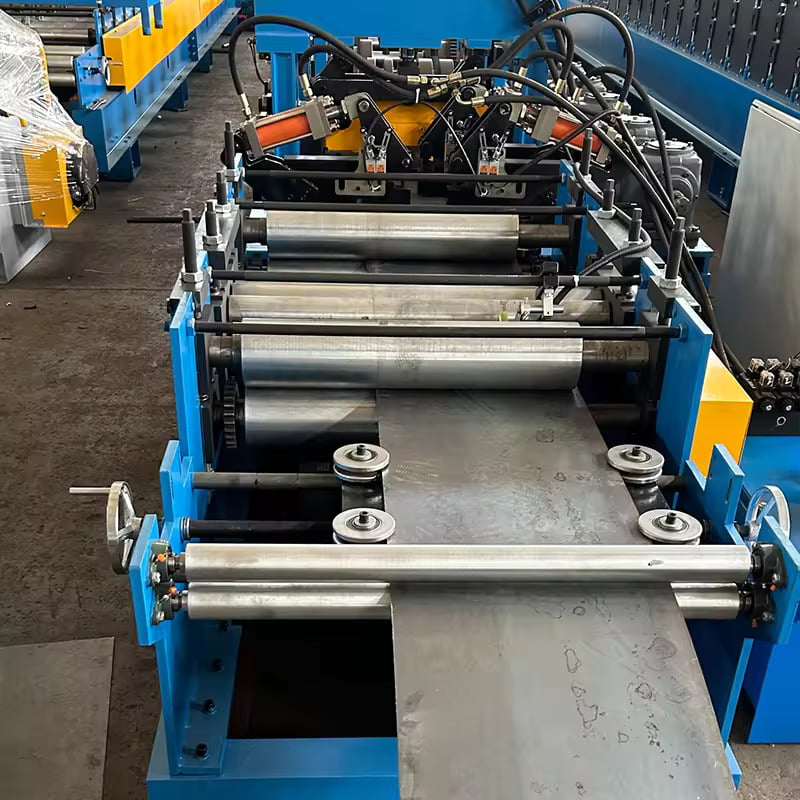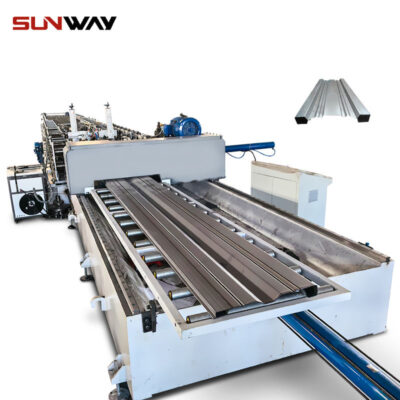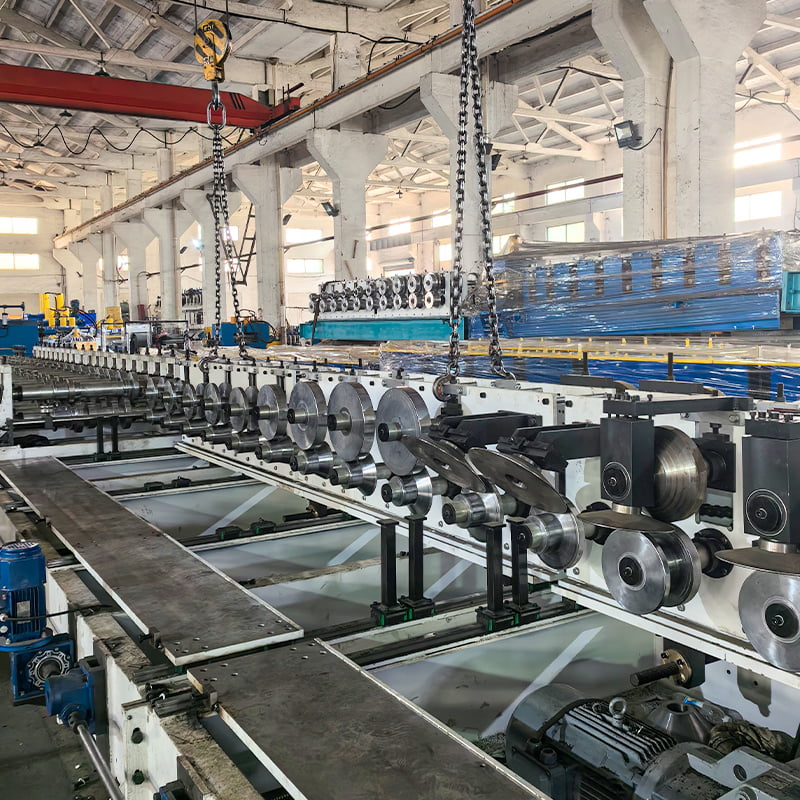Profile roofing sheets are an essential component of modern construction, providing durability, aesthetics, and protection. They are widely used in both residential and commercial buildings. Whether you’re a homeowner looking to improve your house’s appearance or a contractor searching for reliable roofing materials, understanding profile roofing sheets is key.
In this comprehensive guide, we’ll dive deep into the world of profile roofing sheets, from their various types to their functions and everything in between. We’ll also provide detailed information on how they are made, the advantages they offer, and what to consider when choosing a supplier.
Let’s get started by breaking down the essentials!

Overview: What Are Profile Roofing Sheets?
Profile roofing sheets are metal or plastic sheets designed to cover roofs, offering protection from weather, durability, and often, an attractive aesthetic. They are typically corrugated or ribbed, creating channels for water run-off while adding strength to the material. These sheets come in a variety of materials such as steel, aluminum, and polycarbonate, and are often coated with protective finishes to extend their lifespan.
Key Benefits of Profile Roofing Sheets:
- Durability: Resistant to rust, corrosion, and weather damage.
- Lightweight: Easy to install, reducing the structural load on buildings.
- Aesthetics: Available in a wide range of colors and profiles to suit any architectural style.
- Low Maintenance: Minimal upkeep is required, especially when coated with protective layers.
- Energy Efficiency: Reflective coatings can reduce heat absorption, making buildings cooler.
Corrugated Iron Sheets
One of the most common types of profile roofing sheets is corrugated iron. These sheets are made from galvanized steel and feature a wave-like pattern. They are strong, durable, and can withstand extreme weather conditions, making them ideal for a wide variety of applications, including industrial, agricultural, and residential buildings.
Corrugated iron sheets are known for their ability to shed water easily, making them perfect for rainy climates. Their corrugated design also enhances their strength and load-bearing capacity.
Types of Profile Roofing Sheets
When it comes to profile roofing sheets, there are a variety of designs and materials to choose from. Each type has its unique features, making it suitable for different applications. Below is a detailed table describing some of the most common types of profile roofing sheets, along with their specifications and typical uses.
| Type | Material | Description | Typical Applications |
|---|---|---|---|
| Corrugated Sheets | Galvanized steel | Classic wavy design; durable and resistant to rust. | Industrial buildings, farmhouses, sheds. |
| Box Profile Sheets | Aluminum, Steel | Modern appearance; provides better load capacity compared to corrugated sheets. | Warehouses, commercial properties, and contemporary homes. |
| Tile-Effect Roofing Sheets | Steel, Polycarbonate | Mimics traditional clay tiles; combines aesthetics with durability. | Residential homes, villas, and offices. |
| Polycarbonate Sheets | Polycarbonate | Transparent or translucent; lightweight and UV-resistant. | Greenhouses, carports, sunrooms. |
| Standing Seam Roofing | Aluminum, Steel | Interlocking seams for a sleek appearance; strong weather resistance. | High-end residential and commercial buildings. |
| Insulated Roofing Panels | Steel, Aluminum | Features foam insulation between metal layers; excellent thermal properties. | Cold storage, energy-efficient buildings, factories. |
| Zinc Roofing Sheets | Zinc | Natural patina over time; resistant to corrosion. | Heritage buildings, upscale homes, and architectural projects. |
| Aluminum Roofing Sheets | Aluminum | Lightweight, corrosion-resistant, and recyclable. | Coastal buildings, modern architecture, and eco-friendly structures. |
| Fiberglass Roofing Sheets | Fiberglass | Offers high light transmission and durability. | Greenhouses, canopies, and industrial roofing where natural light is needed. |
| Copper Roofing Sheets | Copper | Develops a natural green patina; highly durable. | Historical buildings, high-end architecture, and aesthetic projects. |
Why Choose These Types?
Each type of profile roofing sheet offers distinct advantages. Corrugated iron is robust and cost-effective, while box profile sheets are perfect for modern buildings due to their higher load capacity. Tile-effect sheets bring elegance without the weight of traditional tiles, and polycarbonate sheets are ideal where natural light is desired.
Working Process of Profile Roofing Sheets
Understanding how profile roofing sheets are made can help in assessing their quality and determining their suitability for various projects. The manufacturing process typically involves the following steps:
- Raw Material Selection: High-quality metal sheets (steel, aluminum, zinc, or copper) are chosen based on the desired properties such as durability, corrosion resistance, and aesthetics.
- Forming the Profile: The flat metal sheet is passed through rolling machines that form the desired profile, whether it’s corrugated, box profile, or standing seam.
- Coating & Finishing: To enhance durability and appearance, the sheets are often coated with protective layers such as galvanized zinc, color-bond paints, or anti-corrosion finishes.
- Cutting to Size: The sheets are cut into the required lengths to suit specific roofing needs.
- Quality Inspection: Each sheet undergoes rigorous quality checks to ensure it meets the required standards for thickness, strength, and coating adhesion.
-
 Carriage Board Roll Forming Machine
Carriage Board Roll Forming Machine -
 Highway Guardrail End Terminal Forming Machine
Highway Guardrail End Terminal Forming Machine -
 Highway U/C Post Roll Forming Machine
Highway U/C Post Roll Forming Machine -
 2 Waves Highway Guardrail Roll Forming Machine
2 Waves Highway Guardrail Roll Forming Machine -
 3 Waves Highway Guardrail Roll Forming Machine
3 Waves Highway Guardrail Roll Forming Machine -
 Vineyard Post Roll Forming Machine
Vineyard Post Roll Forming Machine -
 Auto Size Changeable Sigma Purlin Roll Forming Machine
Auto Size Changeable Sigma Purlin Roll Forming Machine -
 Electrical Cabinet Frame Roll Forming Machine
Electrical Cabinet Frame Roll Forming Machine -
 Din Rail Roll Forming Machine
Din Rail Roll Forming Machine
Key Components of Profile Roofing Sheets and Their Functions
| Component | Function |
|---|---|
| Base Metal | Provides strength, flexibility, and durability to the sheet. |
| Protective Coating | Prevents corrosion and increases longevity. |
| Profile Design | Enhances strength, load-bearing capacity, and water shedding. |
| Fasteners | Secure the sheets to the roof structure, preventing uplift. |
| Sealants | Used to ensure watertightness at joints and seams. |
| Underlayment | Acts as an additional water barrier beneath the roofing sheets. |
| Insulation Layer | Improves energy efficiency by reducing heat transfer. |
Each of these components plays a critical role in ensuring that profile roofing sheets perform optimally in various environments, from rainy regions to hot, sunny climates.
Machine Speed and Efficiency in the Production of Profile Roofing Sheets
| Parameter | Details |
|---|---|
| Roll Forming Speed | Typically ranges from 10-30 meters per minute, depending on the machine type. |
| Efficiency | High-efficiency machines can produce sheets with minimal waste and quick changeovers between profiles. |
Customized Mechanical Parameters of Profile Roofing Sheets
| Parameter | Description |
|---|---|
| Sheet Thickness | Can be customized from 0.3mm to 1.5mm, depending on structural requirements. |
| Sheet Length | Produced in lengths from 1 meter to over 12 meters, as required. |
| Profile Height | The height of the corrugation or ribs can vary between 20mm to 200mm. |
| Material Coating Thickness | Varies from 20 microns to 200 microns for different environments (e.g., marine areas). |
Customization is essential for projects requiring specific performance characteristics, like extreme weather resistance or architectural appeal.
Applications of Profile Roofing Sheets
| Application | Profile Roofing Sheet Type |
|---|---|
| Industrial Buildings | Corrugated, Box Profile, Insulated Panels |
| Residential Homes | Tile-Effect Sheets, Standing Seam, Aluminum Roofing |
| Greenhouses and Sunrooms | Polycarbonate, Fiberglass |
| Commercial Properties | Box Profile, Standing Seam |
| Historical Buildings | Zinc Roofing, Copper Roofing |
| Agricultural Buildings | Corrugated Iron, Fiberglass |
Profile roofing sheets are incredibly versatile, offering solutions for different types of buildings depending on the needs of the project.
Installation, Operation, and Maintenance of Profile Roofing Sheets
| Stage | Description |
|---|---|
| Installation | Proper alignment and fastening are crucial to avoid leakage and ensure longevity. Sheets are typically overlapped, and fasteners are placed at regular intervals. |
| Operation | Once installed, profile roofing sheets are relatively maintenance-free, thanks to their durable coatings. However, regular inspections for damage and corrosion are recommended. |
| Maintenance | Clean debris from roofs, inspect for corrosion or leaks, and replace any damaged fasteners or sheets as needed. Protective coatings may also need reapplication over time. |
Maintaining the roof properly will extend its lifespan and keep the building protected from the elements.
Suppliers and Price Range of Profile Roofing Sheets
| Supplier | Price Range per Square Meter (USD) |
|---|---|
| Tata BlueScope Steel | $5 – $12 |
| JSW Steel | $4 – $10 |
| Everlast Roofing | $7 – $15 |
| Safal Group | $6 – $14 |
| Kingspan | $12 – $25 |
Prices vary depending on the type of sheet, material, thickness, and coating.
How to Choose the Right Supplier for Profile Roofing Sheets
| Factor | Consideration |
|---|---|
| Material Quality | Check the durability, coating type, and corrosion resistance. |
| Customization Options | Ensure the supplier offers custom sizes and profiles. |
| Lead Time | Consider how quickly the supplier can deliver the sheets. |
| Warranty | A good supplier will offer a long-term warranty on their products. |
| Price vs. Value | While cheaper options may be appealing, balance cost with quality and longevity. |
Choosing the right supplier can mean the difference between a roof that lasts decades and one that requires constant repairs.
Advantages and Disadvantages of Profile Roofing Sheets
| Advantages | Disadvantages |
|---|---|
| Lightweight and easy to install | Can be noisy during rain unless insulated |
| Highly durable and resistant to corrosion | Metal sheets can dent under heavy impacts |
| Low maintenance requirements | May require professional installation |
| Available in a wide range of colors and finishes | Some materials can be expensive (e.g., copper) |
| Environmentally friendly (recyclable materials) | Metal sheets may require more insulation compared to traditional roofing materials |

FAQ
| Question | Answer |
|---|---|
| What is the lifespan of profile roofing sheets? | Most metal roofing sheets last between 20 to 50 years, depending on the material and coating. |
| Can I install profile roofing sheets myself? | While possible, it’s recommended to have professional installation to avoid mistakes and ensure proper sealing. |
| Do profile roofing sheets require special maintenance? | Minimal maintenance is required, such as regular inspections and cleaning debris off the roof. |
| How much do profile roofing sheets cost? | Prices can range from $4 to $25 per square meter, depending on the material and finish. |
| Are profile roofing sheets environmentally friendly? | Yes, most metal sheets are recyclable and contribute to sustainable building practices. |
Conclusion
Profile roofing sheets are a versatile, durable, and aesthetically pleasing option for a wide range of construction projects. Whether you’re roofing a home, commercial property, or agricultural building, these sheets offer a variety of advantages from low maintenance to energy efficiency. By understanding the different types available, the working process behind their creation, and how to properly maintain them, you can make an informed decision that ensures long-lasting protection for your building.
Choosing the right supplier and sheet type based on your specific needs will maximize the lifespan and performance of your roof, ensuring that you get the best value for your investment.
